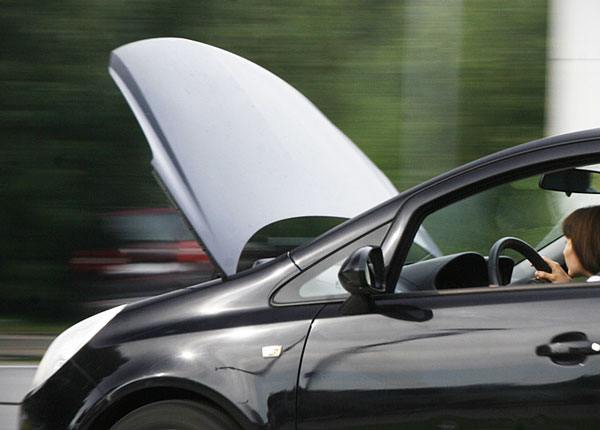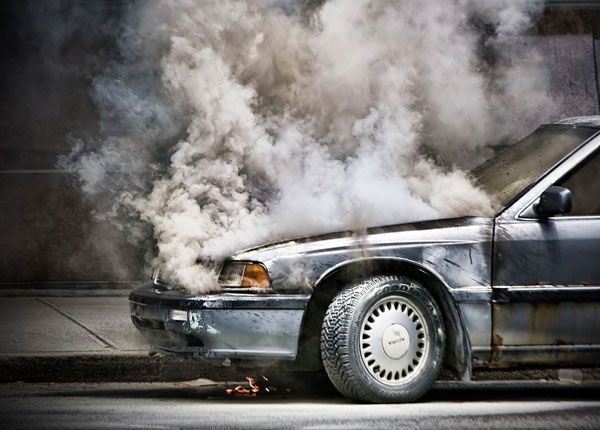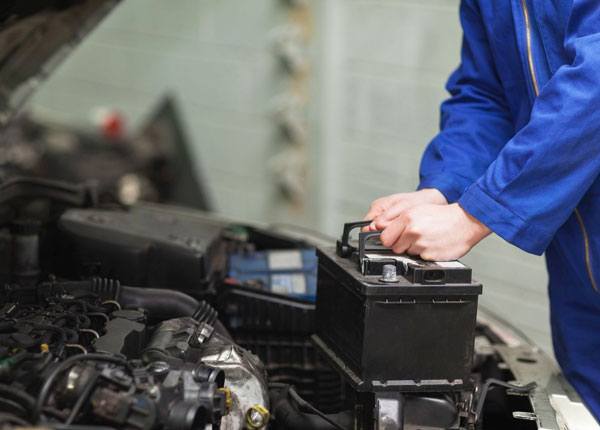
Stuck Accelerator: Causes, What To Do, Driving Safety Rules
Updated Dec. 31, 2020There are few automobile faults more frightening than a jammed gas pedal. A partially or totally jammed accelerator could be the result of a mechanical or electrical failure and it could happen in any vehicle. If your accelerator gets stuck the most important thing to do is remain calm. There are steps you can take to regain control of your vehicle or else steer it safely off the road.
Dealing with a stuck accelerator
A jammed gas pedal could make your car accelerate to full speed in a matter of moments. Under such circumstances, it is unlikely that normal braking will have much effect, as the brakes will be competing against the engine. Use the steps outlined here to bring your vehicle back under control when unintended acceleration strikes.
- 1

Stay calm.
Every decision you make between now and the moment you stop your vehicle must be thought through – your life depends on it. - 2

Shift the car into neutral.
Remember that you must use the clutch to do this in a manual transmission vehicle. This step is vitally important; find out why in the next section. - 3

Push both feet firmly down on the brake pedal and hold them there.
In most runaway car situations, the brakes do not work because the driver cannot press down on them hard enough. - 4

Hold the brake steady and scan the road ahead for an escape route,
such as a hard shoulder. Do not change lanes quickly as this could cause you to lose control of the car when traveling at high speed. - 5

If you cannot shift into neutral, you should shut off the engine to initiate the vehicle slowing. Do not take the key out of the ignition.
These are general guidelines that are intended to work with most vehicles, in most situations. You should also check your vehicle operator’s manual for more specific information relating to stuck accelerators and emergency stops.
Shifting into neutral
Whatever the vehicle or situation, shifting to neutral is a vital part of bringing a runaway vehicle to a stop. Drivers of automatic cars often forget that their vehicle can be switched into neutral and overlook this important step. Shifting the engine to neutral will make it easier to slow the vehicle, by taking power away from the engine. If you leave the car in “drive”, you will be attempting to brake against the full force of the engine. This is a battle you are unlikely to win before the brakes overheat.
Shutting off the engine
There is a great deal of debate over whether the engine should immediately be shut off in the event of a jammed gas pedal, or whether it should be left on until the car has safely stopped. No unified expert answer exists for this conundrum, as there are pros and cons to both courses of action. Whether you should switch your engine off or not depends on the vehicle you are driving and the circumstances surrounding the stuck accelerator. Check your driver’s manual for state-specific guidance and your car operator’s manual for vehicle-specific guidance.
Switching off the engine would mean an immediate loss of your power-assisted steering and braking. When the vehicle is hurtling along at speed, you may need power brakes to bring it to a stop even with the engine shut down. Lack of power steering could make it practically impossible to maneuver the car when traveling at speed. There is also the danger that turning the key in the ignition could activate the steering lock, which would be disastrous.
The opposing argument states that shutting the engine off may be the most effective way to cut power. It could be essential if you cannot shift the car into neutral. Plus, shifting the vehicle into neutral will cause older car engines to over-rev, resulting in permanent damage. Newer cars are built with rev limiters, so this should not be a problem. At any rate, your life is worth far more to you than a car engine.
Causes of a stuck accelerator
Many people assume that stuck gas pedals and runaway cars can only be the product of a manufacturing defect, but this is not the case. Something as simple as the floor mat becoming wedged under the pedal could cause your accelerator to stick – it could happen to anybody. Knowing what can make an accelerator stick will help you take all necessary precautions to avoid it.
Here are some common mechanical and electrical causes which can be avoided with regular servicing:
- A malfunctioning component in the engine-management system
- A defective vacuum hose
- A broken accelerator link or links
These causes can be avoided with driver care:
- Water accumulating in the driver’s footwell during cold weather. If you do not keep your floor mat dry, the gas pedal mechanism can freeze.
- A poorly positioned or bunched-up floor mat. Always check your floor mat is correctly positioned before starting the vehicle.
- An object becoming wedged under the gas pedal. This can happen if you leave bottles and other items in your footwell or under your seat.




